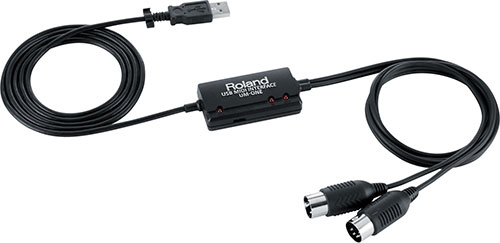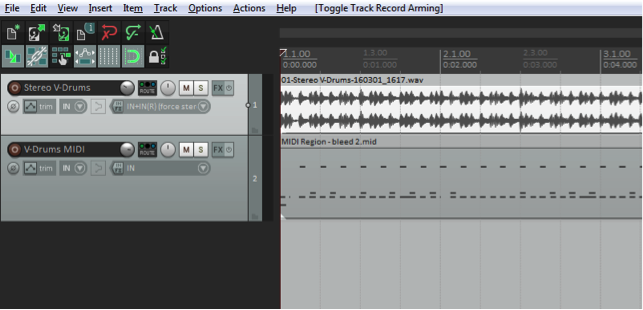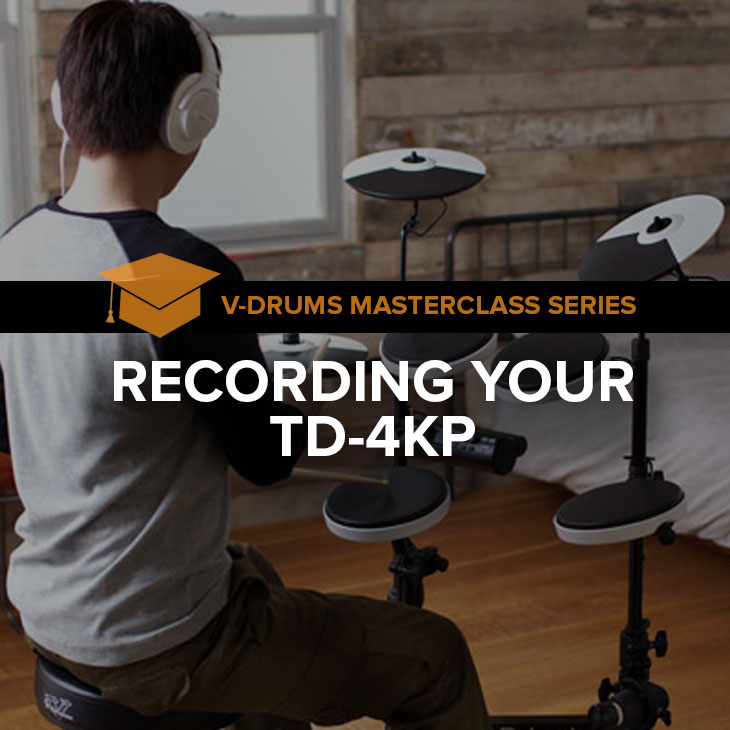Here’s how to record the Roland TD-4KP.
But first…
Acoustic drum recording is an art form.
Finding a balance between equipment, knowledge, patience and money that works for your project is not easy.
A various percussion instruments, a drum kit requires different types of microphones and positioning to make one cohesive drum kit sound.
Capturing a great performance is even more difficult when you’re also the one recording your drums.
Luckily, there are ways to minimize your work flow and maximize your performance!
Contributed by Simon Ayton for Roland Corporation Australia
ENTER ELECTRONIC DRUMS…
Recording electronic drums is simple when compared to recording acoustic drums.
You can record V-Drums almost anywhere.
V-Drums will fit quickly into a recording space and with unlimited sound and performance possibilities, your options for creativity are increased dramatically.
When recording V-Drums, forget about tuning, muffling, microphone positioning and expensive microphone pre-amplifiers.
Forget about specially designed studios, noise problems and studio hire fees.
Relax, focus on the music and just play!
V-Drums are ideal for recording yourself too.
Because of their simplicity, you can focus on your actual performance; Sound decisions can always be decided later.
See the V-Drums range overview here
The aim of this recording masterclass series is to break down and simplify the process of recording electronic drums.
Achieve great results, with just basic connections and knowledge.
Recording the TD-4KP
Even though the TD-4KP is quite a simple little kit, you can record with it via its MIDI and audio outputs to achieve great sounding recordings.
Read about the difference between MIDI and audio here, or read on to jump right in.
Let’s start by looking at these two ways of capturing your performance.
Recording MIDI:
Use the conventional MIDI output of the TD-4 module to record the performance notes.
All you need is a MIDI-to-USB interface for your computer.
The UM ONE MKII allows any conventional MIDI instrument to be recorded into your MAC or PC.
Use Apple’s camera connect kit for any iOS device such as iPad or iPhone.

Once your MIDI interface is recognized by your computer, assign it as the input and output option in your program’s MIDI settings.
There are many drum software plug-ins available for more options or use the internal sounds generated by your software for the drum sounds.

Here are the steps for recording MIDI.
- Connect your instrument’s MIDI out to the MIDI input of the interface.
- Create a new MIDI instrument track and choose a sound source for the drum sounds.
- Arm the track to record and play in your part.
- Rewind and playback the part just recorded.
Recording Audio
For recording the Roland TD-4KP, connect the left and right audio outputs of the TD4-KP into an audio interface.
The Duo Capture EX (UA-22) or Quad Capture (UA-55) are great starting points and both also feature audio and MIDI inputs and outputs.

Here are the steps for recording the audio output of the TD-4KP.
- Connect the left and right outputs from the TD-4KP to the inputs of the audio interface and select the interface in your software’s audio device settings.
- Create a new stereo track in your music recording software.
- Arm the track for record.
- Record your performance.
- Once done, the recorded performance will play as audio out of the audio interface outputs you’ve selected in your software.
Combination MIDI and Audio recording
Many musicians find this to be the best combination.
It offers both creativity in the creation process and the best control of the final sound mix.
When recording the Roland TD-4KP, you will have the most options available when mixing by simply recording a track of MIDI and a track of audio simultaneously.
This can be very useful when recording at the same time with other musicians, as you can fix notes and change sounds later in the mix.

If your chosen drum sounds are being generated inside your sequencing software, decide on them later to be sure that they blend perfectly with other instruments.
If your sounds are being generated by an external drum module, record alternative kits into new tracks. Decide later or even cut between them.
You may even want to choose different kit sounds for the verses and choruses? Everything is possible by combining MIDI and audio recording!
Related Articles
MIDI VS. AUDIO
HOW TO ADD SAMPLES TO YOUR V-DRUMS
TYPICAL DRUM PLAYING TECHNIQUES WITH V-DRUMS
QUICK START GUIDE TO THE ROLAND TD-50 V-DRUMS





